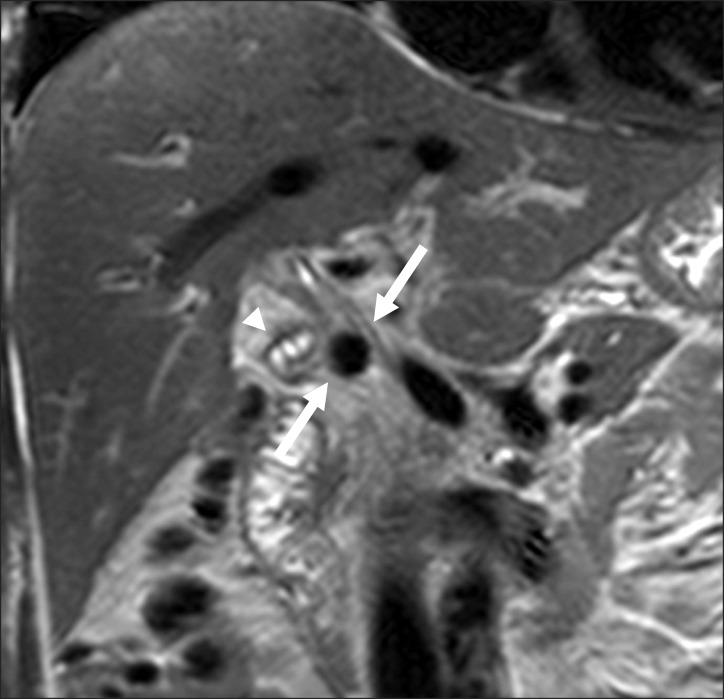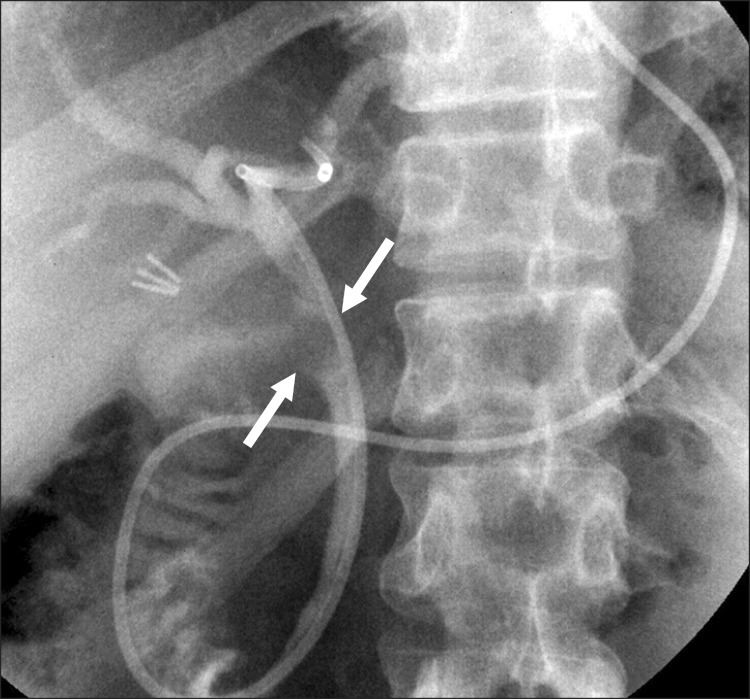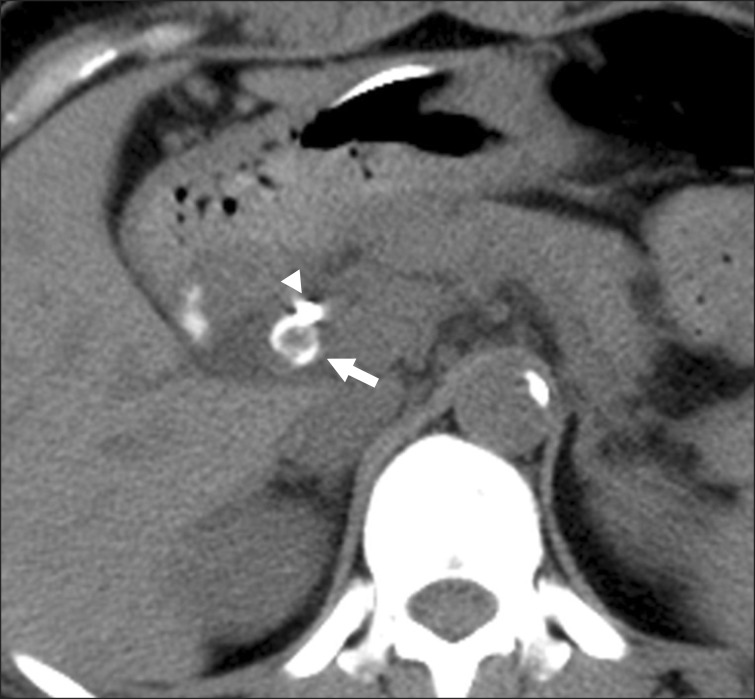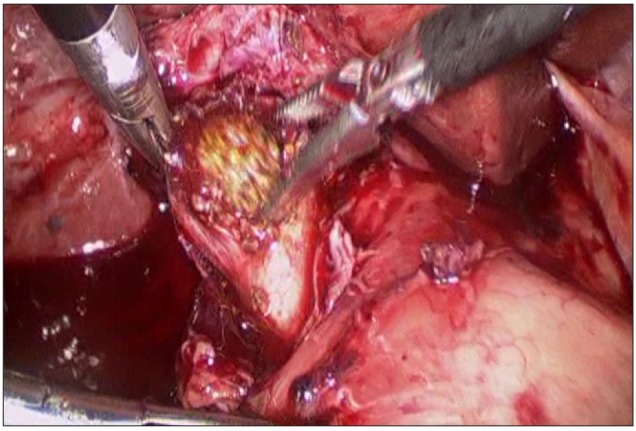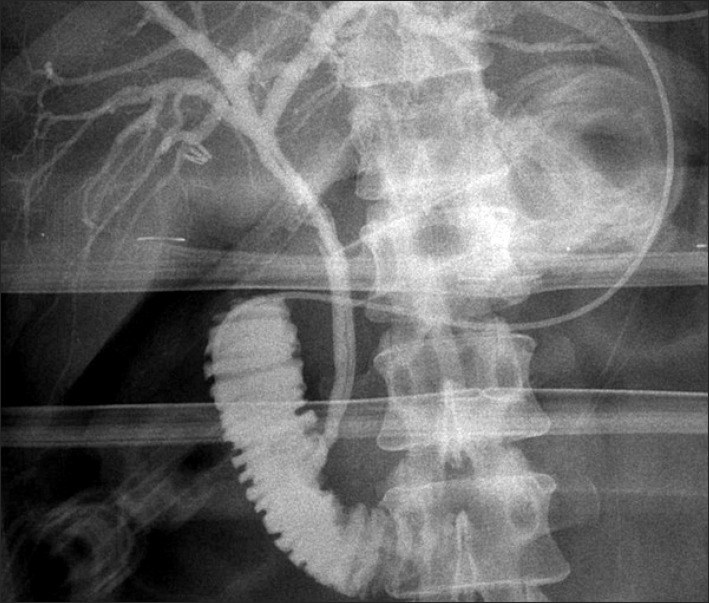Korean J Hepatobiliary Pancreat Surg.
2013 May;17(2):79-82. 10.14701/kjhbps.2013.17.2.79.
Laparoscopic treatment for post-cholecystectomy Mirizzi syndrome
- Affiliations
-
- 1Department of Surgery, Hallym University Sacred Heart Hospital, Hallym University College of Medicine, Anyang, Korea. jangyongjeon@yahoo.com
- 2Department of Gastroenterology, Hallym University Sacred Heart Hospital, Hallym University College of Medicine, Anyang, Korea.
- 3Department of Radiology, Hallym University Sacred Heart Hospital, Hallym University College of Medicine, Anyang, Korea.
- KMID: 1429984
- DOI: http://doi.org/10.14701/kjhbps.2013.17.2.79
Abstract
- The remnant cystic duct or gallbladder neck calculus may rarely result in post-cholecystectomy Mirizzi syndrome. Various managements have been proposed for the treatment of post-cholecystectomy Mirizzi syndrome. Some previous cases of post-cholecystectomy Mirizzi syndrome have been managed with open cholecystectomy and endoscopically. We report a case of a laparoscopic stone removal of post-cholecystectomy Mirizzi syndrome that developed 7 months after laparoscopic cholecystectomy. To our knowledge, this is the first case of laparoscopic management of post-cholecystectomy Mirizzi syndrome. The mechanism, diagnosis and treatment of post-cholecystectomy Mirizzi syndrome are discussed.
Keyword
MeSH Terms
Figure
Reference
-
1. Johnson LW, Sehon JK, Lee WC, et al. Mirizzi's syndrome: experience from a multi-institutional review. Am Surg. 2001; 67:11–14. PMID: 11206888.2. Pemberton M, Wells AD. The Mirizzi syndrome. Postgrad Med J. 1997; 73:487–490. PMID: 9307740.
Article3. Janes S, Berry L, Dijkstra B. Management of post cholecystectomy Mirizzi's syndrome. J Minim Access Surg. 2005; 1:34–36. PMID: 21234142.
Article4. Joo SH, Kim KH, Yun EJ, et al. Laparoscopic removal of a retained gallbladder with remnant cystic duct calculi. Korean J Hepatobiliary Pancreat Surg. 2006; 10:47–51.5. McSherry CK, Ferstenberg H, Virship M. The Mirizzi syndrome: suggested classification and surgical therapy. Surg Gastroenterol. 1982; 1:219–225.6. Csendes A, Díaz JC, Burdiles P, et al. Mirizzi syndrome and cholecystobiliary fistula: a unifying classification. Br J Surg. 1989; 76:1139–1143. PMID: 2597969.
Article7. Antoniou SA, Antoniou GA, Makridis C. Laparoscopic treatment of Mirizzi syndrome: a systematic review. Surg Endosc. 2010; 24:33–39. PMID: 19466486.
Article8. Yonetci N, Kutluana U, Yilmaz M, et al. The incidence of Mirizzi syndrome in patients undergoing endoscopic retrograde cholangiopancreatography. Hepatobiliary Pancreat Dis Int. 2008; 7:520–524. PMID: 18842500.
- Full Text Links
- Actions
-
Cited
- CITED
-
- Close
- Share
- Similar articles
-
- Laparoscopic management of Mirizzi syndrome with liver cirrhosis using indocyanine green mapping: A case report and review of the literature
- Single incision laparoscopic cholecystectomy for patients with Mirizzi syndrome
- Mirizzi Syndrome: A Single Center Experience
- Two cases of Mirizzi syndrome
- Minimally Invasive Approach Using Digital Single-Operator Peroral Cholangioscopy-Guided Electrohydraulic Lithotripsy and Endoscopic Nasogallbladder Drainage for the Management of High-Grade Mirizzi Syndrome

